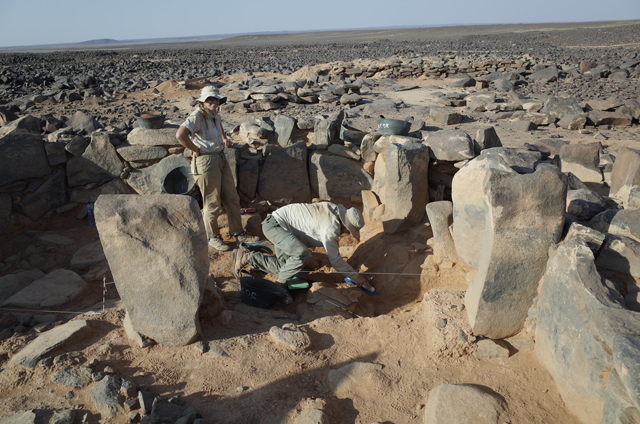The Eastern Badiyah Archaeological Project (EBAP) aims to continue the excavation of structure W-80 near the Wisad Pools, a site located some 125km east of Amman.
Radiometric dating has indicated that the structure was occupied between the mid-seventh and mid-sixth millennia BC, according to Associate Professor at the Oriental Institute of The University of Chicago Yorke Rowan.

“It is clear that this substantial, somewhat rambling structure was repeatedly occupied, abandoned, modified and rebuilt over prolonged periods. Indeed, no two sections of walling are exactly alike. In the later stages of its use, W-80 saw increasingly segmented use of internal space that was manifested in repeated subdivision,” Rowan elaborated.
Moreover, archaeological records at the Wisad Pools are indicative of the Yarmukian and Wadi Rabah cultures, he noted, adding that during the excavation, a total of 810 formal tools were recovered from W-80.
Regarding ceramic finds at the site, petrography (rock analysis) was conducted on 18 pottery samples recovered from W-66 and W-80, Rowan said, adding that all of the diagnostic decorated shards can be attributed to the Yarmukian cultural entity.
“Of particular interest was the provenance of the raw materials used to manufacture this pottery, given the paucity of known clay resources in the vicinity of the Wisad Pools, and the high probability that this pottery was made elsewhere and carried in,” the professor said.
Recently, it has become clear that the landscape and vegetation around the Wisad Pools would have been significantly more verdant and better resourced during the Late Neolithic (LN) than the grimly arid conditions that characterise the locality today, Rowan said.
“At the Wisad Pools, this is manifested by the documented presence of oak stands, marsh plants and perhaps willow in their respective environmental niches,” Rowan said.
Emerging evidence suggests that sites such as the Wisad Pools and Wadi Al Qattafi may have been important hubs of cultural exchange between disparate regions for at least some of the period in question, Rowan added.
“However, to attribute sole causality to climate change is to deny agency to human factors that may have been as influential, if not more so, in shaping the path of events. As the EBAP moves into its second decade, investigation of these issues will be a priority,” Rowan said.
--
Source: the Jordan Times.
